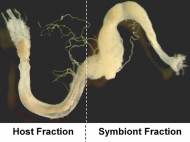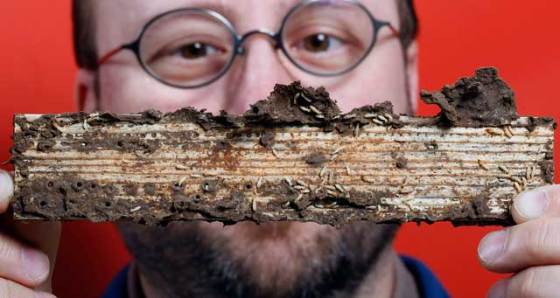Termite digestive system biomimicry could lead to biofuel production
 Although termites represent one of the peskiest household pests, they could prove to be beneficial for biofuel production. Enzymes in termite guts are instrumental in the insect’s ability to break down the wood they eat, and a group of researchers from Purdue University have applied their knowledge of termites to develop a cocktail of enzymes that could enable fuel production from woody biomass.
Although termites represent one of the peskiest household pests, they could prove to be beneficial for biofuel production. Enzymes in termite guts are instrumental in the insect’s ability to break down the wood they eat, and a group of researchers from Purdue University have applied their knowledge of termites to develop a cocktail of enzymes that could enable fuel production from woody biomass.
“For the most part, people have overlooked the host termite as a source of enzymes that could be used in the production of biofuels. For a long time it was thought that the symbionts were solely responsible for digestion”, said Michael Scharf, the O. Wayne Rollins/Orkin Chair in Molecular Physiology and Urban Entomology at Purdue University. “Certainly the symbionts do a lot, but what we’ve shown is that the host produces enzymes that work in synergy with the enzymes produced by those symbionts. When you combine the functions of the host enzymes with the symbionts, it’s like one plus one equals four.”
Scharf and his research partners separated the termite guts, testing portions that did and did not contain symbionts on sawdust to measure the sugars created. Once the enzymes were identified, Scharf and his team worked with Chesapeake Perl, a protein production company in Maryland, to create synthetic versions. The genes responsible for creating the enzymes were inserted into a virus and fed to caterpillars, which then produce large amounts of the enzymes. Tests showed that the synthetic versions of the host termite enzymes also were very effective at releasing sugar from the biomass.
They found that the three synthetic enzymes function on different parts of the biomass. Two enzymes are responsible for the release of glucose and pentose, two different sugars. The other enzyme breaks down lignin – the rigid compound that makes up plant cell walls and one of the most significant barriers that blocks the access to sugars contained in biomass. Scharf said it’s possible that the enzymes derived from termites and their symbionts, as well as synthetic versions, could be more effective at removing that lignin barrier.
“We’ve found a cocktail of enzymes that create sugars from wood”, said Scharf. “We were also able to see for the first time that the host and the symbionts can synergistically produce these sugars.”
The researchers plan to work on identifying the symbiont enzymes that could be combined with termite enzymes to release the greatest amount of sugars from woody material. Combining those enzymes would increase the amount of biofuel that should be available from biomass.
For more information, you can read the article in the online version of the journal PLoS One named: “Multiple Levels of Synergistic Collaboration in Termite Lignocellulose Digestion”.










Great research and excellent option for biofuel production. Biofuels are the future energy and all avenues to produce them need to be exploited.
Dr.A.Jagadeesh Nellore(AP),India
Wind Energy Expert
E-mail: anumakonda.jagadeesh@gmail.com
this research really help for my thesis, thanks so much.
Kiki ayu kiswara, University of Sriwijaya. Indonesia.